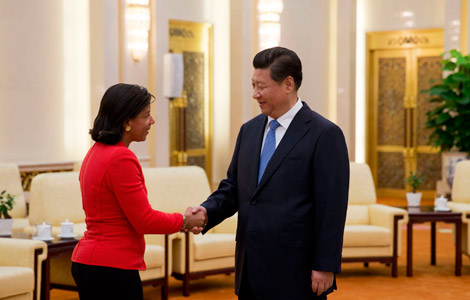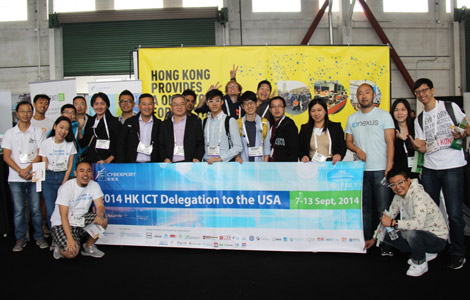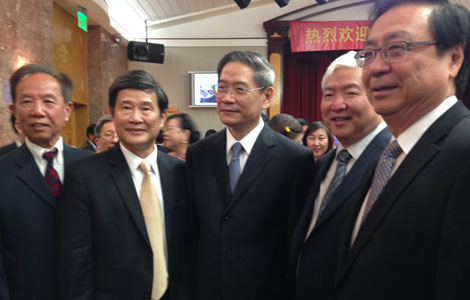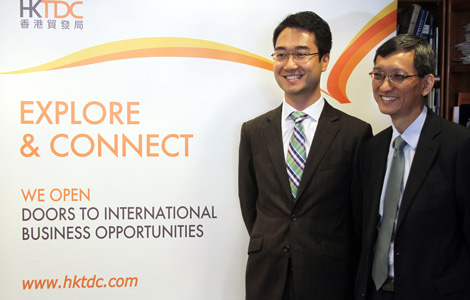US tech firm joins Chinese plant to help curb pollution
Updated: 2014-09-09 10:51
By Amy He in New York(China Daily USA)
|
||||||||
Boston-based Oasys Water will use its technology to help desalinate coal-fired wastewater produced by a Chinese power plant, as China tackles cleaning up rivers and ground water polluted by thousands of coal-fired plants.
Changxing Power Plant in East China's Zhejiang province will use Oasys' technology to treat the wastewater from flue gas desulfurization (FGD), which is the process of removing sulfur dioxide from power plant flue gases, Jim Matheson, president and CEO of Oasys Water, explained to China Daily on Monday.
The planned wastewater treatment will desalinate up to 650 cubic meters of wastewater a day. The technology will be sent to Zhejiang province in early 2015.
"The situation in China has been that this [flue gas desulfurization] has not been particularly well taken care of. It's been discharged into areas around the power plant and that's one of the main drivers of the polluted rivers and groundwater in China," he said.
"What has happened recently is that the regulators in China - and this is happening in the world elsewhere also - have said that the power plant operator has to treat the FGD entirely before you can discharge that water."
It's the first time a Chinese company is applying a method created by the company.
Matheson said in a statement released on Sept 2 that it's an important milestone for the company for being selected as part of the plant's ZLD (zero liquid discharge) project being developed with Beijing Woteer.
"The win marks the first of many potential [ZLD] projects for our company, it highlights Oasys' growth and momentum in the Asia-Pacific region and it also underscores the successful commercialization of Forward Osmosis technology," he said.
When wastewater is processed into high-purity water that can be reused for other purposes, it is said to have achieved zero liquid discharge.
Oasys uses what it calls forward osmosis technology, which involves the natural osmotic process to separate water from dissolved solids.
"Instead of using hydraulic pressure, the driving force for this separation is a 'draw' solution of higher concentration than the feed water," it explains on its website.
"The osmotic gradient between the two streams is used to create a flow of water through the membrane, allowing clean water to mix with the draw solution separating it from salt and other contaminants."
Matheson said that Oasys has designed and is building a water treatment process that can clean the flue gas desulfurization effluent entirely to a zero liquid discharge state.
The process can be integrated into the power plant infrastructure to clean up the wastewater "entirely", he said, and the company is pushing for an early 2015 start.
"What's so important about this is that it's the first major FGD deal project that's being designed and implemented in China," Matheson said.
He said that it's estimated there are about 2,500 coal-fired power plants in China, which has been a cause of pollution and the regulation states that all of these power plants have to implement water treatment system on the backend.
"It's an enormous problem for China, and therefore it's an enormous opportunity for companies like Oasys to help solve this problem with new innovative technologies that allow this water to be treated in a way that hasn't been able to be done before," he said.
The FGD market is set to see varying growth by 2020, driven primarily by coal dependency and efforts to combat air and water pollution, according to data from GlobalData.
That dependency will boost the number of FGD installations around the world, it said.
amyhe@chinadailyusa.com
(China Daily USA 09/09/2014 page2)
- Fund tries to keep talented students in hometown
- Last emperor's cousin criticizes dramas for distorting history
- From rustic to chic: Chinese dama inspires intl designers
- A classy thank you for China's teachers
- Dance students step up for military training
- Dancing dragon fires up Mid-Autumn Festival celebrations
Most Viewed
Editor's Picks

|

|

|

|

|

|
Today's Top News
Launch of space lab scheduled for 2016
Li reassures investors on investigations
Apple unveils new phones, watch
China 'largest economy' by 2024
More Chinese students going to Canada for high school
China, US rein in disputes
Alibaba kicks off IPO global roadshow in NY
US tech firm joins Chinese plant to help curb pollution
US Weekly

|

|















